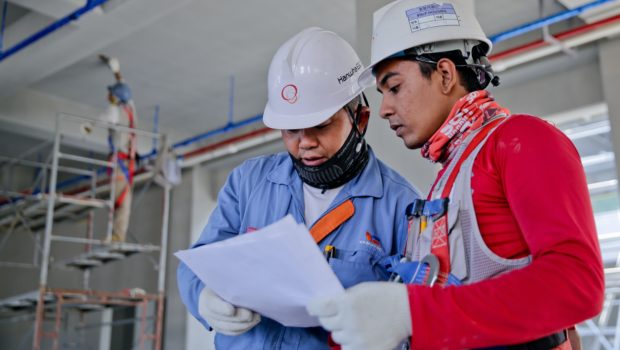Understanding Lift Stations: What it Does and How it Works
Many cities have a sewage department that is responsible for the wastewater collection system’s maintenance work. To ensure all components are working correctly, lift stations need daily attention. This article serves as a guide to understanding how lift stations operate and what the wastewater system does.
What is Lift Station?
Wastewater lift stations are pumping stations that transfer wastewater from a lower level to a higher level. The advantage of using a lift station in a sewage collection system is that it saves a large amount of money in excavation costs, which includes digging for sewer pipes.
Sewer tubes live underground, and it is expensive to dig trenches. At some points in a gravity pipeline system, installing a wastewater lift station saves front-end construction costs without compromising performance or functionality. Learn more here.
What is the Purpose of a Lift Station?
Lift stations are being used to decrease the cost of constructing a sewage system. As gravity sewers are being built in trenches more than three meters deep due to the more complicated and expensive equipment used for trench shoring, the cost of sewer line construction increases significantly.
The scale of the sewer gravity lines depends on the slope and flow of the minimum pipe. Using smaller-sized pipelines at a shallower depth allows pumping wastewater to convey the same flow and reduce pipeline costs.
Here are what cost-effective lift stations designed for:
- Match pump capacity, form, and configuration with the quantity and quality of wastewater.
- Ensure consistent and uninterruptible functioning.
- To allow the installed equipment to be easily controlled and maintained.
- Accommodate future expansion of capacity.
- To prevent septic conditions and unnecessary odor release in the collection system and the lift station.
- Reduce the environmental and landscape effect on residential and industrial projects in the surrounding area.
- Keep the lift station and the nearby regions from being flooded.
How Lift Stations Work
The lift station pumps the wastewater through a pressurized pipe known as a force main, which at a higher elevation transports the wastewater to the ultimate discharge point. A wastewater lift station requires these to store wastewater temporarily:
- Wet well
- Two or more submersible pumps
- Piping
- Pump float controls
- Valve vault
- Radio communication equipment
- Control panel
- Backup generator
Lift stations are vital parts of an efficient system for collecting sewage. In sloped pipes that take advantage of gravity to hold costs down, raw wastewater makes its way underground. This pipe system is commonly referred to as a pipeline of gravity.
Wastewater needs to reach the pipe system from a lower elevation in some instances. It has to be successfully moved to a higher elevation for the untreated sewage to begin the journey through a wastewater treatment facility.
Lift Station vs. Pumping Station
The Lift station and Pumping station are two different things but are somehow similar. The lift station is primarily built to pump waste or sewage material to a higher level than the pump station intended to boost water to a higher elevation, not sewage. They are entirely different in the materials they contain and move.
1. Lift Station
The electrical system and the controls also have to be separated from the effects of sewage and weather contamination. Electronic monitoring devices that are sent to a centralized location are often used in many modern control systems.
The lift station varies from a small in-home station where the engine is a fractional horsepower engine to a municipality where there are many large horsepower engines with built-in redundancy in the system that help mitigate the pump’s effects failures.
High water alarms, alternating pump regulators called a Lead-Lag system, and indicators for any power loss to the controls or the station could be necessary procedures. If any of these is not functioning properly, you will need to call a lift station repair specialist.
2. Pump Station
Pumping stations supply water to higher levels of the treatment plant. In general, wastewater and groundwater transferred by pumping stations are free of solid materials and sewage. These systems do not need grinders to break up sewage and particulate materials because of this.
The method of transferring water from one section of your treatment plant to another can thus be simplified. Pumping stations may be used to extract water that has already been through the treatment process at your plant from storm drains or process water.
Pumps that transfer wastewater are present in both lift stations and pump stations. Usually, wastewater flows into a tank and at a higher elevation is pumped out to another gravity sewer pipe; this makes it a lift station. Other times, over longer distances, often several miles, the pumps can transfer the wastewater, making it a pump station.
Essentially, the controls for either the list station or the pumping station, including alarms and pump cycling, operate in much the same way. The discrepancy between them is found in the ‘Authority Having Jurisdiction’ code specifications. Such codes can vary widely from city to city and state to state, so always consult your local authority’s jurisdiction.
Monitoring Made Easy with SCADA
SCADA systems are designed to gather field information, move it to a central computer facility and display it graphically or textually to the operator, enabling the operator to track or manage an entire system in real-time from a central location.
SCADA can:
- Switch on or off equipment.
- Display operational data in real-time.
- Make system-wide views of service available through the equipment.
- Provide alarms and data.
- SCADA systems consist of software as well as hardware.
The SCADA system’s heart is the HMI, with one of the most common implementations built in a control room using several PC-based HMIs. Moreover, the HMIs obtain operating data from RTUs and convert the data into information to allow operator monitoring, control, and optimization.
All of the necessary connectivity options are provided by the HMI/SCADA software, including support for hundreds of standard communication protocols. The best SCADA software facilitates connectivity through wired and wireless data connections with almost any sort of RTU and communication with the cloud. It also includes upper-level computing platforms, such as enterprise asset management system and resource planning.
















